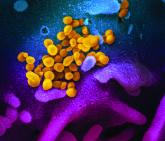News

COVID-19: Frequently asked clinical questions
- Author:
- Tina Chuong, DO
- Samantha Flanagan, DO
- Jeffrey Matthews, DO
- And Neil Skolnik, MD
Publish date: April 24, 2020
Should I continue to vaccinate my pediatric population during peak COVID-19?
Opinion

Summary: American Medical Society for Sports Medicine position statement on concussion in sport
- Author:
- Dimitry Belogorodsky, DO
- Susan Fidler, MD
- And Neil Skolnik, MD
The American Medical Society for Sports Medicine recommends that student athletes receive specific evaluations.
News

Update on the third international consensus definitions for sepsis and septic shock
- Author:
- Geoffrey Mills, MD, PhD
- Bryan Botti, MD
- And Neil Skolnik, MD
Publish date: September 20, 2016
The new international consensus definition of sepsis/septic shock seeks to distinguish life-threatening organ dysfunction caused by a dysregulated...
